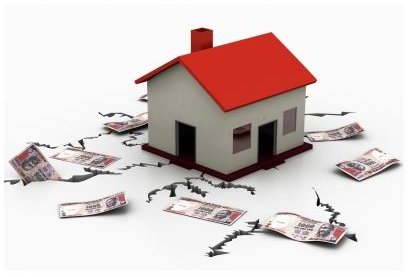What You Should Know About Subprime Loans and Interest Rates
Introduction
These days, many people have been exposed to the brutal reality of subprime loans and interest rates. Foreclosure rates are at an all time high, which are in part due to subprime lending within recent years. In this article, we discuss the meaning of subprime loans, the advantages and disadvantages, and offer tips to smart subprime borrowing.
What Are Subprime Loans?
Subprime loans and interest rates are offered to borrowers who do not qualify for prime rates. Meaning, borrowers who have low credit scores of 600 or lower are considered subprime borrowers and are often charged a higher interest rate and fees, according to Investopedia.com. More importantly, interest rates for subprime borrowers can range from 8% to 10%, or higher, as researched by the Consumer Federation of America. The reason that higher interest rates are justifiable is because the lender considers the borrower to be at a higher risk of default.
The Advantages of Subprime Loans
Overall, subprime loans are not the preferred choice of any borrower. However, when individuals have less than perfect credit, many times subprime loans and higher interest rates are the only option. If used correctly, subprime loans can pose an advantage to the prudent borrower. Obviously, one of the main advantages to obtaining a subprime loan is the ability to own your own home. According to Governor Edward Gramlich (a board member of the Governors of the Federal Reserve System), “Approximately 9 million American homeowners are now able to live in their own homes, improve their neighborhoods, and use their homes to build wealth.”
Another advantage to subprime loans is that if you already have a high interest rate, you can obtain another subprime loan and refinance the old loan at a lower rate. This allows the homeowner to save a substantial amount of money in interest over the life of the loan.
Finally, subprime borrowers can use this opportunity to build their credit score. Within a few years, the borrower will have the option of refinancing their subprime loan for a prime loan. This is if their credit scores has substantially improved, of course.
The Disadvantages of Subprime Loans
Unfortunately, there are quite a few disadvantages to obtaining a subprime loan. It’s true that homeowners can use their homes to build wealth and improve their neighborhoods and coincidentally, it’s also equally true that subprime lenders commonly face a higher rate of foreclosure and delinquencies. Between 2000 to 2006, research has shown a strong connection related to rising foreclosure rates and subprime lending. This rise in foreclosures is also due to adjustable rate mortgages (ARM), which are so commonly associated with subprime loans. Meaning, many subprime borrowers were trapped into a loan that allowed them to obtain a low- interest rate for the first 2 years and when the 3rd year comes along, the interest rates are often adjusted, meaning a higher monthly payment. This caused a significant portion of subprime borrowers to default on their loans, which is a huge disadvantage to subprime loans and interest and higher rates.
Please continue on to Page 2 for more answers to questions on subprime loans.
Questions & Answers on Subprime Loans

If you’ve decided to get a subprime loan, there are some questions on subprime loans you will need to find the answers to. Subprime loans can work for you only if you understand how to position yourself out of the subprime loan. For example, obtaining a higher credit score will allow you the opportunity for a better interest rate, and to get you out of the subprime category. Nonetheless, you must consider the following subprime lending tips that will put you in a better financial light:
1. Put at least a 20% down payment on the loan.
The more money that you are able put down will lessen the amount of loan that is available to be subjected to interest. This will also help you build more equity in your home. Therefore, it is advisable to put at least 20% down on your mortgage.
2. Pay down your current debt.
If you have a lot of outstanding debt, your lender will consider you to be a risky borrower which could adversely affect the interest rate charged on your loan. Typically, lenders will pull your credit report in order to scrutinize your payment history and credit score. If you have tremendous amounts of outstanding debt, they will assume that you are unreliable and may deny the loan altogether. Moreover, having a lot of debt suggests that you are not ready for the responsibility of a mortgage loan, putting you at greater financial risk.
3. Understand your loan terms.
If you have questions on subprime loans, please make sure you ask your lender. If your lender is pressuring you to sign the loan documents, don’t! It’s perfectly OK to walk away and think about the possible financial implications of the subprime loan before you sign the loan documents.
Conclusion
Subprime loans and interest rates can be a complex topic. Therefore, you will need to do ample amounts of research and consider your entire financial position. Although there are some advantages to subprime lending, if you are not careful, you can find yourself in deep financial trouble. It’s prudent to always consider your options carefully before agreeing to any type of loan terms.
References:
- https://www.homebuyinginstitute.com/mortgage-types-25.php
- https://www.consumeraffairs.com/news04/2005/subprime_study.html
- https://www.investopedia.com/terms/s/subprime_mortgage.asp
Image Credits:
